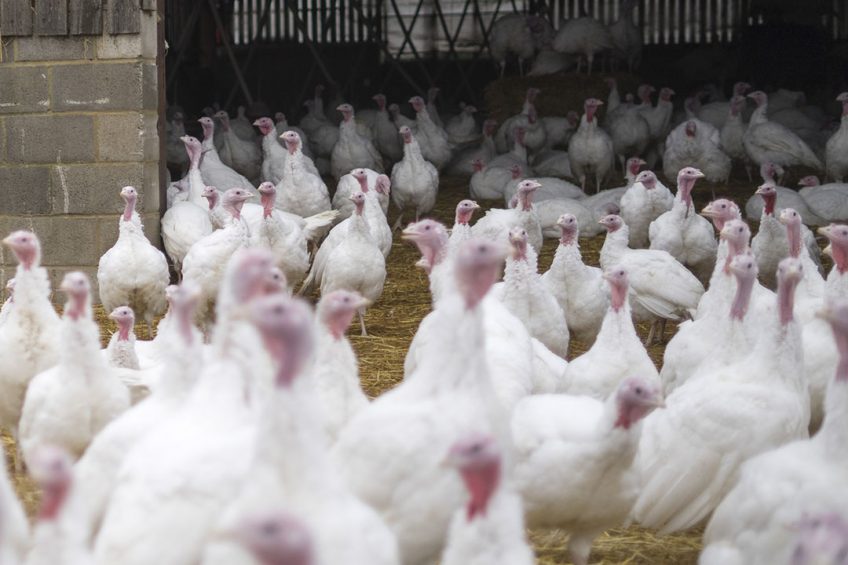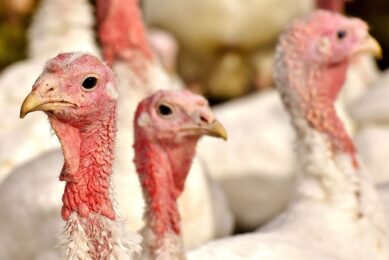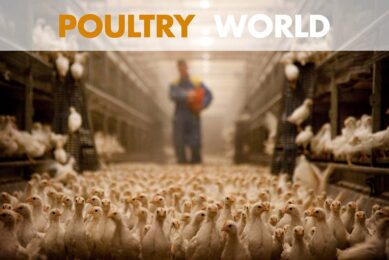Seasonal poultry at the centre of Peach Croft farm

The annual Goose Producers’ Walk, where seasonal farmers gather to exchange ideas and learn took place on Bill and Kim Homewood’s Oxfordshire holding this year. Poultry World went along.
Peach Croft Farm is an enterprise that thrives by engaging with the public, and has seasonal poultry at its heart.
Located on the edge of the growing Oxfordshire town of Abingdon, the holding centres round a farm shop and café, with a sizeable flock of Christmas turkeys prominent as consumers drive up to park. As the year progresses pick-your-own asparagus, strawberries and later pumpkins are on offer, before the first few geese are sold from Michaelmas (29 September) and finally Christmas turkeys join the offering in December.
One of a kind event
Bill and Kim Homewood, third-generation tenants renting from nearby Radley College, hosted this year’s British Goose Producers Walk, where would-be seasonal farmers can join experienced hands at the only event of its kind.
The farm started out in turkey production eighty years ago and goose farming began about 40 years later, when Bill’s mother could not find one in Oxford’s covered market one Christmas. The next year the farm reared 30 birds, and the following 300, which Bill recalls was an ambitious step up. Since then, numbers have gradually grown over the years to today, where the farm has settled on about 2,000.

“The market seems quite good,” he told producers, explaining it had been quite tight last season, and it appeared prospects look positive again this year. In addition to the geese, some 8,000 turkeys are reared, the majority being free-range KellyBronze with the balance made up of white, “farmyard reared” birds, which are kept in barns but have daytime access to an open yard.

Whole and portions
In addition to farmgate sales through the shop, birds are marketed whole and in portions to butchers and other farm stores across the county and further afield. Feathers are sent across to a Norfolk business and come back as own-brand pillows, while 300g jars of pure goose fat are a popular year-round offering.

Mr Homewood explains that it’s been a challenge in recent years to get geese up to the highest weight range, but a switch to the German Eskildsen breed has improved matters. The first birds were placed on 15 April this year, and are fed wholly on a ration with no wheat added to boost growth.
When it comes to processing, which begins at the beginning of December, birds are first stunned with a captive bolt device that delivers 1200lbs of pressure to the back of birds’ skulls, delivering instant death. It marks a change from electric tongs, which were used before legislation changes. “After having to change to the bolt stun last year, I’d never go back to the electrical stunner,” says Bill. Turkeys are still stunned with electric (the goose’s downy head makes electric contact difficult to achieve consistent results).

Marketing
After feathers are removed, birds are weighed – butchers are looking for heavier geese, Bill suggests, with 5kg being about the minimum. His own operation markets birds in four weight bands from 4.5kg upwards to 6.5kg plus.
After processing birds are moved to cold stores kept to about 2°C, ready for sale from the farm gate and beyond.
| New guidance for goose producers Two new guides were launched by the British Poultry Council (BPC) at the annual farm walk covering production standards and readiness for avian influenza. The new voluntary code of practice on goose production and an avian influenza (AI) contingency plan will be given to all members of British Goose Producers, which is part of the BPC. In introducing the new publications BPC technical director Máire Burnett said the code pulls together all the legislation and market requirements to cover every aspect of rearing geese and would be a working document to be updated to reflect future changes in legislation. The AI contingency plan has been developed in conjunction with Livetec Systems to provide guidance to poultry producers affected by an AI outbreak or the restrictions imposed following an outbreak in the locality. Seasonal poultry production often forms just part of a farm business, and the firm’s Julian Sparrey said it was important to consider the disruption an outbreak of avian influenza could cause. Farms with small business units hosting other companies or shops selling produce may all lose access to their premises in the event of an outbreak, while authorities investigate. “If you have no plan at all, that disruption would last longer,” he warned. Ms Burnett added that following the new documents could allow insurance underwriters to benchmark farms with a self-declaration of risk management. It would also serve as an assurance to the wider industry that smaller farms are maintaining high standards in relation to disease prevention and control, she said. |













